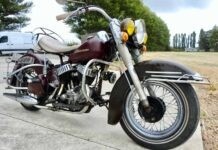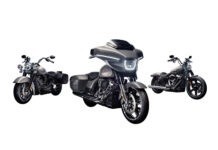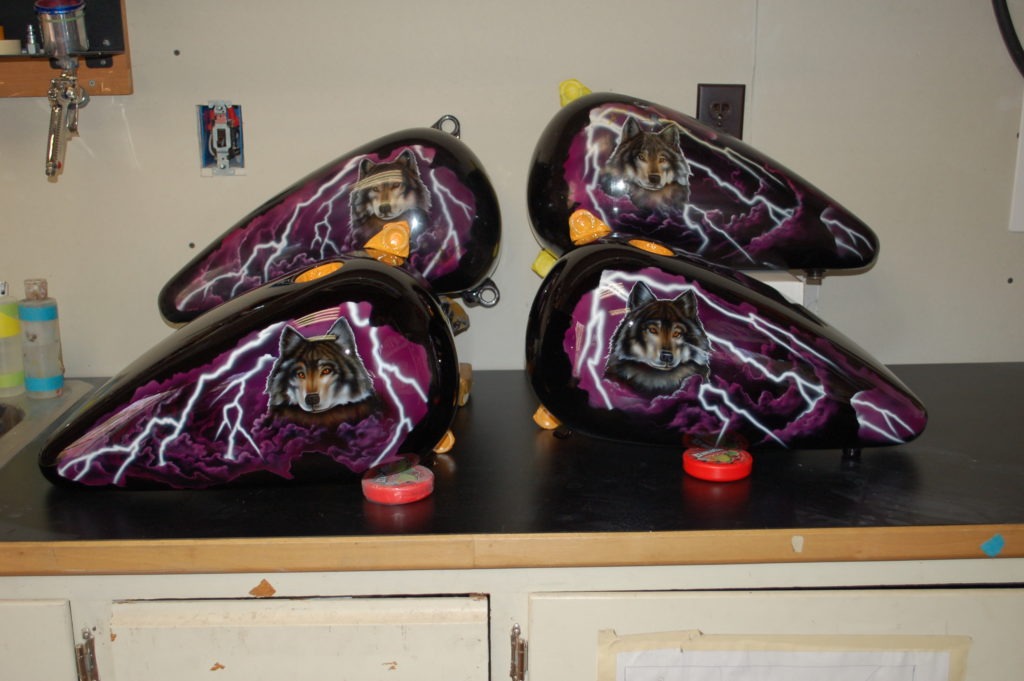
Parts and Accessory Color-Matching Methods of the Pros
Words and photos by JoAnn Bortles
Last month we delved into the sometimes-tricky process of finding the best painter for the custom-paint job in question. This month we take a look at how the pros get new or non-stock parts painted to match a customer’s bike’s original paint color.
It doesn’t seem all that complicated at first blush. After all, every day collision shops repair and color-match damaged paint on cars – and most do a pretty good job. But when it comes to motorcycle paint it’s a completely different deal. Why is that? There are a number of reasons. Car companies know their products will get damaged and make it easy for shops to match their colors by keeping the paint color formulas fairly simple and readily available to repair shops.
Conversely, while many motorcycle paint color formulas are available on the market to customers and painters, most motorcycle paint colors are considerably more complex than their automotive counterparts. Some bike-specific colors are painted in what’s known a tricolor, which consists of a metallic or pearl reflective base with a transparent candy or pearl candy color layered over it.
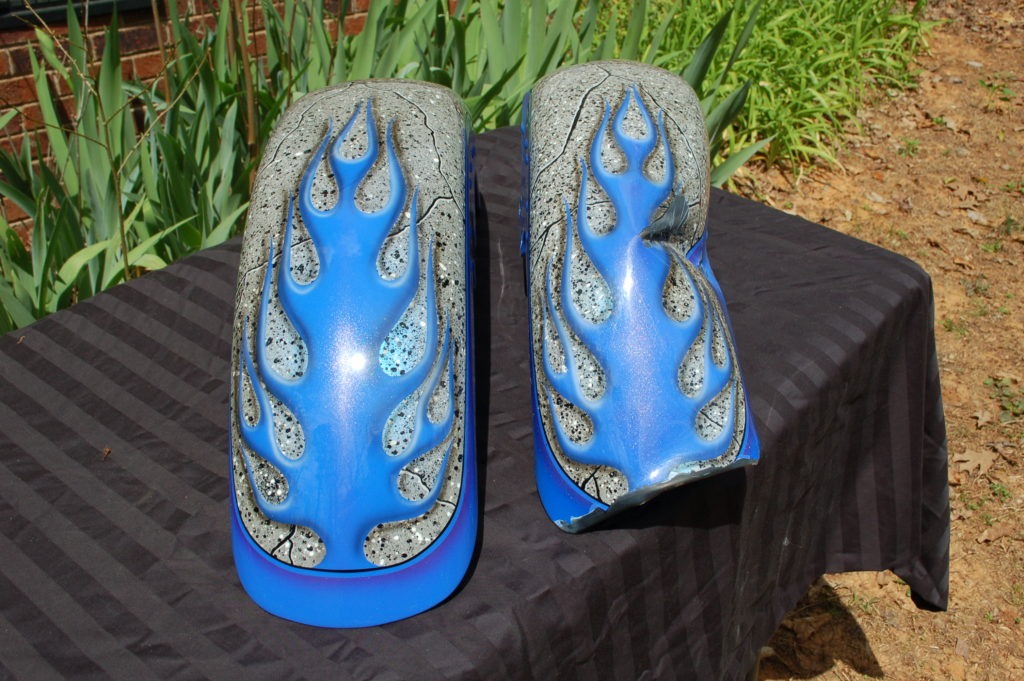
Some motorcycle companies make their paint colors available on the open market, but the painter has to figure out how to spray the paint colors so that they match the specific paint job. It’s a technique thing in many cases. Many factors can affect the appearance of the reflective base layers. These include the air pressure used in the gun, paint layer thickness and the distance between the spray gun and the surface. Some motorcycle companies even add an ingredient to the metallic or pearl that changes the brightness of the paint. Plus, the number of coats of transparent and pearl colors will also completely change the way the paint looks. This makes it a challenge to match colors even when specific paint formulas are available. Complicating matters is that some motorcycle companies are very proprietary with their colors, and the formulas for these limited-edition colors are simply not available.
So what do you do when you need to replace a damaged part on your bike, or want to get extended bags painted to match your bike’s original paint? First off, find a painter who specializes in matching factory motorcycle paint. Ask at your local dealership or bike shop for names or companies. Most will have a painter that fixes damaged bike parts for them. Once you find a painter ask to see examples of their work. Maybe they have a job in process that you can look at. Most will have a portfolio of their color-match jobs with parts sitting side by side for comparison.

If you can’t find anyone local, there are long-distance painters who can do the job. Some painters will create color samples of their color match and send the actual samples to you for your approval before they paint the part. That way you’re assured of the best result.
Some colors are easier to match than others, and chances are your painter will spend more time matching the color or colors than actually painting them. Know this going in and be patient with your painter. It takes time to find the right combination of paint ingredients and how they are applied. A color might match in the sun but not in the shade. Now, there are aftermarket paint companies that sell ready-to-spray mixtures of many motorcycle colors. Sometimes their paint matches, sometimes it doesn’t. Unless a painter has experience with a specific color, they’ll likely have no idea how long it will take to match the color. And for two-tone paint jobs, that means matching three colors; the two different colors of the two tone and the color of the pinstripe or border that separates them.
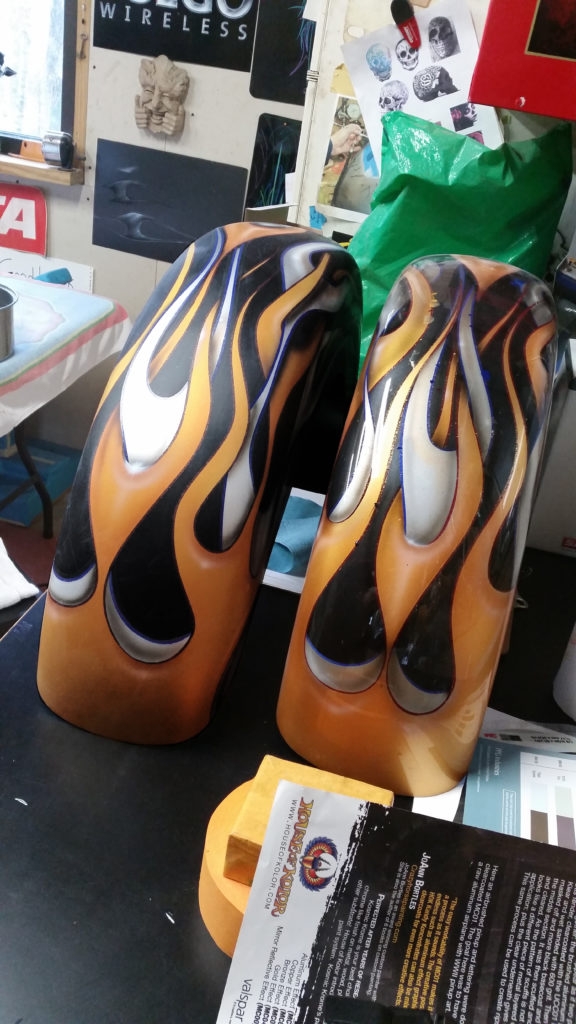
And sometimes, no matter how much time is spent on samples, the painter has to find a happy medium between the color tone and the reflective qualities of the metallic or pearl layers. That means they come as close as they can, but the paint is not a perfect match. Sometimes it’s noticeable, but often it’s not. Some motorcycle companies offer painted parts to match their bikes, and there are times when this is the most efficient way to replace damaged parts on your bike – though be prepared to pay a pretty penny for pre-painted parts most of the time.

Now, if you have a custom paint job that gets damaged, your best option is usually to contact the original painter and have them repair it – or paint the new part. But what if that painter isn’t available? There are painters out there who specialize in repairing and matching custom paint. Find one whose style is similar to your bike’s paint. They will also have to color-match the paint colors and should provide you with actual samples. Have them send you photos of the newly painted or repaired parts before they apply the finish clearcoat so they can make any changes you want before the job is completed.
Here’s to having a great custom-painting experience!
JoAnn Bortles is an award-winning custom painter and journalist. She’s the owner of Crazy Horse Custom Paint and the author of seven books on motorcycle and automotive painting. www.crazyhorsepainting.com. For questions please email JoAnn@crazyhorsepainting.com or call 704-231-9109.




